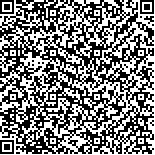| 引用本文: |
吕巧巧,李霞,田圆,徐菁,陈莉,张莉,霍则军.电针“委中”穴对腰多裂肌损伤大鼠铁代谢的调节[J].湖南中医药大学学报,2022,42(2):251-258[点击复制] |
|
| |
|
|
| 本文已被:浏览 2428次 下载 918次 |
| 电针“委中”穴对腰多裂肌损伤大鼠铁代谢的调节 |
| 吕巧巧,李霞,田圆,徐菁,陈莉,张莉,霍则军 |
| (北京中医药大学针灸推拿学院, 北京 100029;浙江省人民医院康复医学科, 浙江 杭州 310014;北京字节跳动网络技术有限公司, 北京 100086;北京大学第三医院中医科, 北京 100191) |
| 摘要: |
| 目的 观察多时间点大鼠多裂肌损伤后铁代谢相关蛋白的变化规律,探讨不同干预时间条件下电针“委中”穴对多裂肌损伤性腰痛的治疗作用。方法 SD大鼠按随机数字表法分为正常组、模型组、电针组,每组30只,各组再分为1 d、2 d、3 d、5 d、7 d 5个亚组,每个亚组6只。采用注射0.5%布比卡因(bupivacaine,BPVC)的方法造模,电针组电针双侧“委中”穴(1次/d),正常组、模型组不进行电针干预。分别于治疗的1 d、2 d、3 d、5 d、7 d取材。采用HE染色观察造模前后多裂肌形态变化;采用生化法检测多裂肌组织总铁含量变化;采用Western blot法检测铁蛋白重链(ferritin heavy chain1,FTH1)含量;采用Real-time PCR法检测多裂肌膜蛋白转铁蛋白受体1(transferrin receptor 1,Tfr1)、二价金属转运蛋白1(divalent metal transporter 1,DMT1)mRNA的表达。结果 HE染色结果显示,模型组相较于正常组可见肌纤维断裂、坏死并伴有炎性细胞浸润;与同时间点模型组相比,电针组受损肌纤维可见明显改善。生化法检测结果显示,与同时间点正常组相比,模型组、电针组总铁含量升高(P<0.01);Western blot、Real-time PCR检测结果提示模型组FTH1蛋白表达低于正常组(P<0.05或P<0.01),而Tfr1与DMT1 mRNA表达均高于正常组(P<0.05或P<0.01);与同时间点模型组相比,电针1 d、2 d、3 d、5 d组FTH1蛋白表达升高(P<0.05或P<0.01),而电针2 d、3 d、5 d、7 d组Tfr1 mRNA和电针1 d、2 d、3 d、5 d组DMT1 mRNA表达均降低(P<0.05或P<0.01);各模型组间比较发现,模型2 d组FTH1蛋白表达最低(P<0.05),而模型2 d、3 d组Tfr1 mRNA表达较高(P<0.05),模型3 d组DMT1 mRNA表达最高(P<0.05);各电针组比较结果显示,FTH1蛋白在电针2 d组最高(P<0.05),电针3 d、5 d、7 d组Tfr1 mRNA表达较低(P<0.05),电针3 d组DMT1 mRNA表达较高(P<0.05)。结论 在BPVC致多裂肌损伤模型中,局部受损多裂肌发生铁代谢紊乱,且在急性损伤期较典型。电针“委中”穴能促进损伤多裂肌的修复,其机制可能与调节多裂肌铁代谢、减轻组织过氧化损伤相关,并且在电针持续干预3 d后显著促进对铁代谢紊乱水平的调节。 |
| 关键词: 多裂肌损伤 电针 铁代谢 铁蛋白 转铁蛋白受体1 二价金属转运蛋白1 |
| DOI:10.3969/j.issn.1674-070X.2022.02.014 |
| 投稿时间:2021-10-25 |
| 基金项目:国家自然科学基金面上项目(81574052)。 |
|
| Regulation of electroacupuncture at “Weizhong” (BL40) on iron metabolism in rats with lumbar multifidus muscle injury |
| LU Qiaoqiao,LI Xia,TIAN Yuan,XU Jing,CHEN Li,ZHANG Li,HUO Zejun |
| (School of Acupuncture and Massage, Beijing University of Chinese Medicine, Beijing 100029, China;Department of Rehabilitation Medicine, People's Hospital of Zhejiang Province, Hangzhou, Zhejiang 310014, China;Beijing Byte Beat Network Technology Co., Ltd., Beijing 100086, China;Department of Traditional Chinese Medicine, The Third Hospital of Peking University, Beijing 100191, China) |
| Abstract: |
| Objective To observe the changes of iron metabolism related proteins after lumbar multifidus muscle injury (LMMI), and to explore the therapeutic effect of electroacupuncture (EA) at "Weizhong" (BL40) on back pain caused by LMMI under different intervention time. Methods SD rats were randomly divided into normal group (n=30), model group (n=30) and EA group (n=30). Each group was further divided into five subgroups (1 d, 2 d, 3 d, 5 d, 7 d), with 6 rats in each group. The LMMI model was made by injecting 0.5% bupivacaine (BPVC). EA group was treated EA at both sides of "Weizhong" (BL40) points once a day, the normal group and model group were not intervened by EA. The samples were collected at 1, 2, 3, 5 and 7 days after treatment. HE staining was used to observe the morphological changes of multifidus muscle before and after modeling; biochemical method was used to detect the content of total iron in multifidus tissue; Western blot method was used to detect the content of ferritin heavy chain 1 (FTH1); and Real-time PCR method was used to detect the expression of multifidus membrane protein transferrin receptor 1 (Tfr1) and divalent metal transporter 1 (DMT1) mRNA. Results The results of HE staining showed that the muscle fibers in the model group were broken, necrotic and accompanied with inflammatory cell infiltration compared with the normal group, and the damaged muscle fibers were significantly improved in the EA group compared with the model group at the same time. The results of biochemical method showed that the content of total iron in the model group and EA group was higher than that in the normal group at the same time (P<0.01). Western blot and Real-time PCR showed, the expression of FTH1 protein in the model group was lower than that in the normal group (P<0.05 or P<0.01), while the expression of Tfr1 and DMT1 mRNA in the model group was higher than that in the normal group (P<0.05 or P<0.01). Compared with the model group at the same time, the expression of FTH1 protein increased in the EA 1 d, 2 d, 3 d and 5 d groups (P<0.05 or P<0.01), while the Tfr1 mRNA expression decreased in the EA 2 d, 3 d, 5 d and 7 d groups and the DMT1 mRNA expression decreased in the EA 1 d, 2 d, 3 d and 5 d groups (P<0.05 or P<0.01). Compared with each model group, it is found that the expression of FTH1 protein in model 2 d group was the lowest (P<0.05), while the expression of Tfr1 mRNA in model 2 d and 3 d groups was higher (P<0.05), the expression of DMT1 mRNA in model 3 d group was the highest (P<0.05). Compared with each EA group, the results showed that the expression of FTH1 protein was the highest in the EA 2 d group (P<0.05), the expression of Tfr1 mRNA was lower in the EA 3 d, 5 d and 7 d groups (P<0.05), and the expression of DMT1 mRNA was higher in the EA 3 d group (P<0.05). Conclusion In the model of LMMI induced by BPVC, the iron metabolism of local injured multifidus muscle is disordered, and it is typical in the time of acute injury. EA at "Weizhong" (BL40) can promote the repair of injured multifidus muscle, and its mechanism may be related to regulating iron metabolism of multifidus muscle and reducing tissue peroxidation injury, and significantly promote the regulation of iron metabolism disorder level after continuous EA intervention for 3 d. |
| Key words: lumbar multifidus muscle injury electroacupuncture iron metabolism ferritin transferrin receptor 1 divalent metal transporter 1 |
|

二维码(扫一下试试看!) |
|
|
|
|




